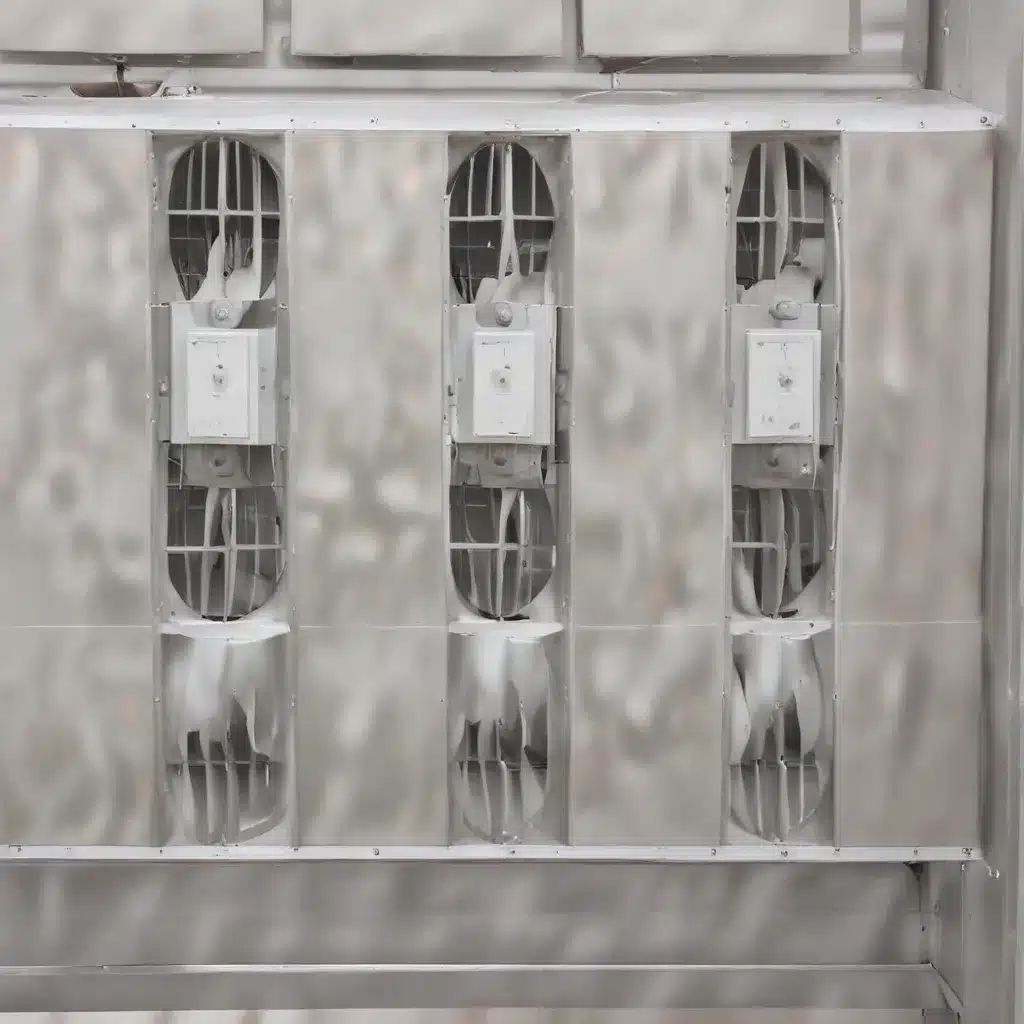
As an experienced air conditioning specialist, I’ve seen firsthand the significant impact that humidity can have on the performance and efficiency of HVAC systems. In the UK, where we experience a range of climatic conditions, from coastal regions with high moisture levels to drier inland areas, addressing humidity control is crucial for maintaining optimal indoor air quality and comfort.
The Importance of Humidity Control in HVAC Design
One of the primary challenges I’ve encountered in HVAC design is balancing energy efficiency with the need for proper humidity control. While energy-efficient systems aim to minimize outdoor air intake to reduce heating and cooling loads, this can compromise indoor air quality by limiting the fresh air supply. Excessive humidity can lead to a host of issues, including the growth of mold, bacteria, and dust mites, which can trigger allergic reactions and respiratory problems.
Maintaining optimal indoor humidity levels, typically between 30% and 60%, is essential for creating a healthy and comfortable environment. In coastal regions, where the influence of moisture-laden air is more pronounced, this can be particularly challenging. Schools in these areas are often exposed to high humidity levels, which can negatively impact student health, concentration, and academic performance.
Strategies for Effective Humidity Control
To overcome these humidity challenges, I’ve found that a multi-faceted approach is often the most effective:
Adequate Ventilation
Proper ventilation is a critical component of humidity control. HVAC systems should be designed to meet ventilation standards and codes, ensuring sufficient air exchange rates based on occupancy levels and building usage. This helps to dilute indoor air pollutants and provide a steady supply of fresh outdoor air.
Filtration Systems
High-efficiency air filters can capture airborne particles, including dust, pollen, and allergens, improving indoor air quality. Filters with a Minimum Efficiency Reporting Value (MERV) rating of 13 or higher are recommended for effectively trapping smaller particles and allergens.
Humidity Control Measures
Incorporating humidity control measures, such as dehumidification during humid conditions and humidification in dry climates, is essential for maintaining optimal indoor humidity levels. HVAC systems should be designed with these capabilities to prevent mold growth and microbial proliferation.
Source Control
Minimizing indoor air pollutants at their source can be an effective strategy for improving indoor air quality. This can include using low-emission building materials, implementing proper ventilation in areas prone to indoor pollutants (e.g., kitchens, bathrooms), and prohibiting smoking indoors.
Regular Maintenance
Routine inspection, cleaning, and maintenance of HVAC systems are crucial for preventing microbial growth, removing accumulated debris, and ensuring optimal system performance. This includes cleaning ductwork, replacing air filters, and inspecting coils and drainage pans for mold or moisture accumulation.
Addressing Moisture Challenges in HVAC Systems
Uncontrolled moisture entry and condensation can cause significant damage to building structures, furnishings, and finish materials, as well as trigger mold growth that can lead to health and performance issues for occupants. Primary causes of indoor moisture problems in new schools often include inadequate ventilation, thermal bridging, and poor construction practices.
To address these challenges, I recommend focusing on controlling moisture entry into the building and preventing condensation. Proper duct design and insulation, along with strategies to reduce the potential for future moisture contamination, can help mitigate the risk of mold growth and other moisture-related problems.
Embracing Innovative HVAC Technologies
As the industry continues to evolve, I’ve seen the emergence of advanced HVAC technologies that can significantly improve humidity control and indoor air quality. For example, demand-controlled ventilation systems with carbon dioxide sensors can help regulate the amount of outdoor air introduced based on occupancy levels, saving energy and controlling moisture in highly variable spaces.
Additionally, new insulation materials and duct design techniques have been developed to minimize the potential for moisture intrusion and improve the resilience of HVAC systems. By staying up-to-date with these technological advancements, we can help ensure that the HVAC systems we design and install are not only energy-efficient but also effective in maintaining a healthy and comfortable indoor environment.
Importance of Proper Commissioning and Maintenance
Proper commissioning and ongoing maintenance of HVAC systems are essential for ensuring their long-term performance and efficiency. During the commissioning process, I carefully verify that all system components, including air handling units, controls, and exhaust fans, are easily accessible and properly labeled to facilitate operation and maintenance.
Regular inspections, cleaning, and maintenance of HVAC systems are crucial for preventing issues like microbial growth, debris accumulation, and moisture-related problems. By making these practices a priority, we can help extend the lifespan of the equipment and ensure that the indoor air quality and comfort levels are maintained throughout the building’s lifecycle.
Conclusion
Addressing humidity control challenges in HVAC systems is a critical component of delivering high-performing, energy-efficient, and healthy indoor environments. By employing strategies like adequate ventilation, effective filtration, humidity control measures, and proactive maintenance, we can help create comfortable and safe spaces that support the wellbeing of building occupants.
As an air conditioning specialist, I’m committed to staying at the forefront of industry advancements and best practices in HVAC design and maintenance. By continuously optimizing our approach and leveraging innovative technologies, we can help Hamilton Air Conditioning provide our clients with the most reliable and efficient climate control solutions tailored to their unique needs. After all, maintaining optimal indoor air quality and comfort should be a top priority for any building, whether it’s a school, office, or residential property.